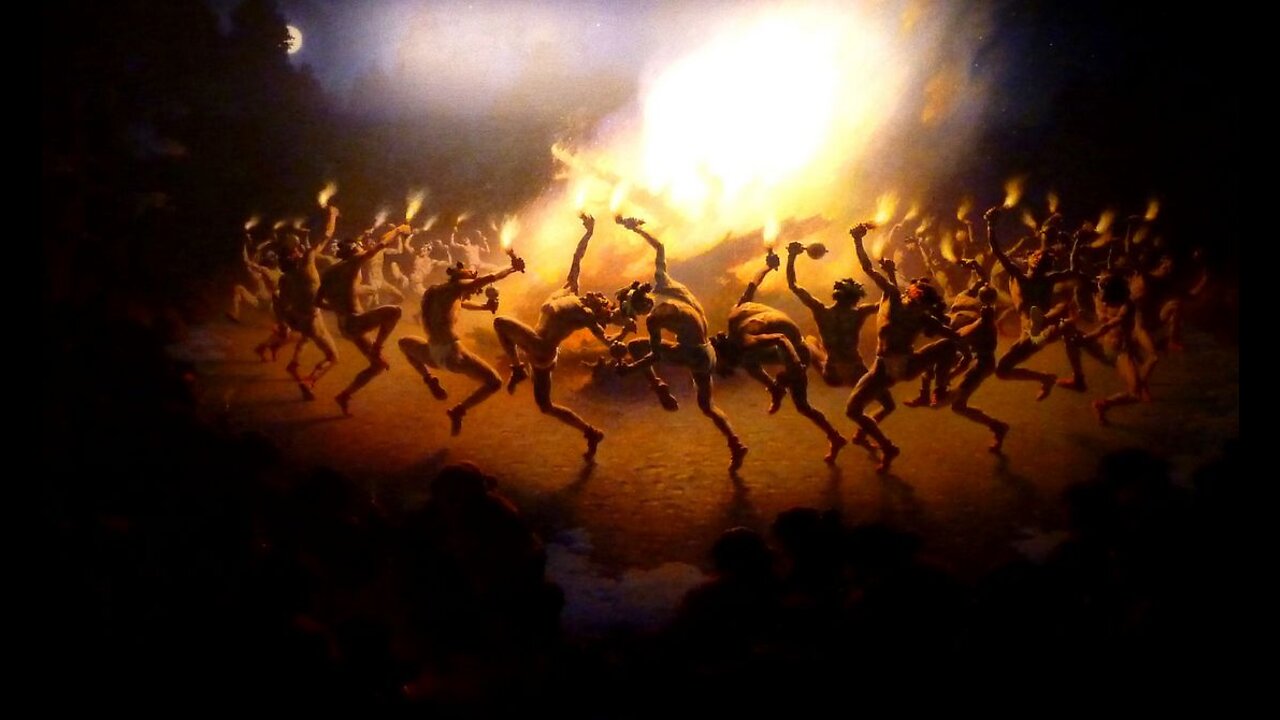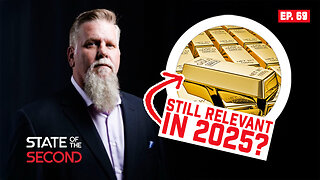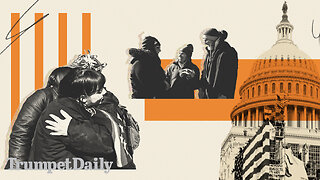Premium Only Content

"The Shining Pyramid", by Arthur Machen
This is just all the chapters put together into one upload. If you've been following along the whole time, there is nothing new to hear here.
----
0:00:00 The Arrow-head Character
0:14:38 The Eyes on the Wall
0:26:45 The Search for the Bowl
0:32:12 The Secret of the Pyramid
0:40:30 The Little People
----
You can support me on Patreon! https://www.patreon.com/sststr
From the annotations:
Chapter 1: "far in the spiritual city" - from "The Holy Grail", one of Tennyson's "Idylls of the King". The words are spoken by Percival's sister to Galahad before he sets out on his quest: "Go forth, for thou shalt see what I have see, | And break through all, till one will crown the king | Far in the spiritual city."
Castletown - a stand-in for Newport, Wales, a port city near Caerleon and site of Newport Castle.
Charles II punch-bowl: a silver punch-bowl from the reign of the "Merry Monarch" (1660-85) would have been, then as now, extremely valuable.
Chapter 2: Nothing of note
Chapter 3: Croesyceiliog - now a suburb of Cwnbran, a new town established in 1949 and comprising 6 villages. It lies to the north of Caerleon and Newport.
idol of the South Seas - the great stone moai of Easter Island.
Chapter 4: the awful words: of the consecration. Cf. Anglican theologian Edward Pursey's description of "the awful words, whereby He consecrated for ever elements of this world to be His Body and Blood".
"the word of corruption, the worm that dieth not": a reference to the eternal punishment of hell, described in Mark 9:48 ("Where their worm dieth not, and the fire is not quenched"), a passage which itself looks back to Isaiah 66:24 ("for their worm shall not die, neither shall their fire be quenched, and they shall be an abhorring unto all flesh.")
Chapter 5: The old puzzle of Achilles and the Tortoise: famous paradox proposed by the pre-Socratic philosopher Zeno of Elea. Aristotle summarized it thus: "the so-called 'Achilles' [argument] amounts to this, that in a race the quickest runner can never overtake the slowest, since the persuer must first reach the point whence the pursued started, so that the slower must always hold a lead".
oubliette: secret dungeon with access only through a trapdoor in the ceiling.
there is a "Devil's Punch-Bowl" in Surrey: natural amphitheater. At a nearby Gibbet Hill, a memorial stone commemorates the 1786 murder of the "Unknown Sailor". Perhaps Machen had in mind the site's lurid history, as well as its shape, in conceiving of his own infernal "punch bowl" in Gwent; as a lover of Dickens, he would certainly have remembered Nicholas and Smike's visit to the spot in "Nicholas Nickleby".
The old derivation from πυρ: accepted by Samuel Johnson in his Dictionary, but presented as an exemplary case of etymological spuriousness by renowned Victorian philologist Richard Chenevis Trench: "The Greeks assumed that the pyramids were so named from their having the appearance of flame going up into a point, and so they spelt "pyramid", that they might find πυρ, or "pyre", in it, while in fact "pyramid" has nothing to do with flame or fire at all, being, as those best qualified to speak on the matter declare to us, an Egyptian word of quite a different signification.
The pictures used are:
Chapter 1: Flint arrowheads (farms near Tipp City, Ohio, USA) by James St. John, used here under the Creative Commons Attribution 2.0 Generic license (https://creativecommons.org/licenses/by/2.0/deed.en)
Chapter 2: a country home and lane in Wales by GayleKaren, used here under the Creative Commons Attribution-ShareAlike 3.0 Unported license (https://creativecommons.org/licenses/by-sa/3.0/deed.en)
Chapter 3: the Welsh countryside. Not quite a bowl shaped depression, and not nearly grey enough, but probably as close as I'm going to get for a public domain image
Chapter 4: "Navajo Fire Dance by William Robinson Leigh" by Granger Meador, used here under the Creative Commons Attribution-NonCommercial 2.0 Generic license (https://creativecommons.org/licenses/by-nc/2.0/)
Chapter 5: "The Parlour" by Neil Schofield, at the National Museum of Welsh Life, St Fagans, Cardiff. Used here under the Creative Commons Attribution-NonCommercial 2.0 Generic license (https://creativecommons.org/licenses/by-nc/2.0/)
To follow along: https://en.wikisource.org/wiki/The_Shining_Pyramid_(collection)/The_Shining_Pyramid
-
 2:10:04
2:10:04
Barry Cunningham
3 hours agoLIVE WATCH PARTY: PRESIDENT TRUMP INTERVIEW WITH SEAN HANNITY!
12.5K4 -
 1:37:19
1:37:19
Glenn Greenwald
6 hours agoAs Trump Vows to Restore Free Speech, Harvard Just Assaulted It; Columbia Professor Forced Out Over Israel Criticisms | SYSTEM UPDATE #394
56.2K100 -
 58:45
58:45
The StoneZONE with Roger Stone
2 hours agoTrump Pardons Ross Ulbricht | The StoneZONE w/ Roger Stone
48.6K8 -
 1:57:31
1:57:31
2 MIKES LIVE
11 hours ago2 MIKES LIVE #170 with special guest Rep. Buddy Carter (R-GA)
43.1K1 -
 DVR
DVR
Flyover Conservatives
21 hours agoA Doctors Response to Trump’s First Moves: W.H.O. and FDA - Dr. Troy Spurrill; A REAL-LIFE Approach to Health and Wellness Transformation - Kellie Kuecha Moitt | FOC Show
29.5K2 -
 41:50
41:50
State of the Second Podcast
6 hours agoWhat do Gold and Guns have in common?
10.4K3 -
 1:01:26
1:01:26
PMG
3 hours ago $0.10 earnedLibs In FULL PANIC Since Trump Took Office! Creating a Faith to Fit their Agenda
7.86K3 -
 7:09:22
7:09:22
Dr Disrespect
11 hours ago🔴LIVE - DR DISRESPECT - TRIPLE THREAT CHALLENGE - EXTREME EDITION
240K32 -
 55:00
55:00
LFA TV
11 hours agoThe End of the January 6 Hoax | TRUMPET DAILY 1.22.25 7pm
35.3K11 -
 1:13:37
1:13:37
Battleground with Sean Parnell
9 hours agoPresident Trump Is On FIRE w/ Savage Rich Baris
176K25